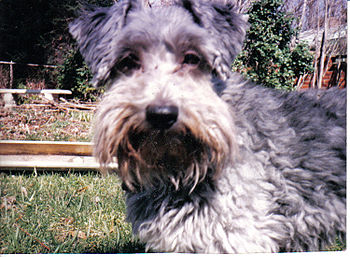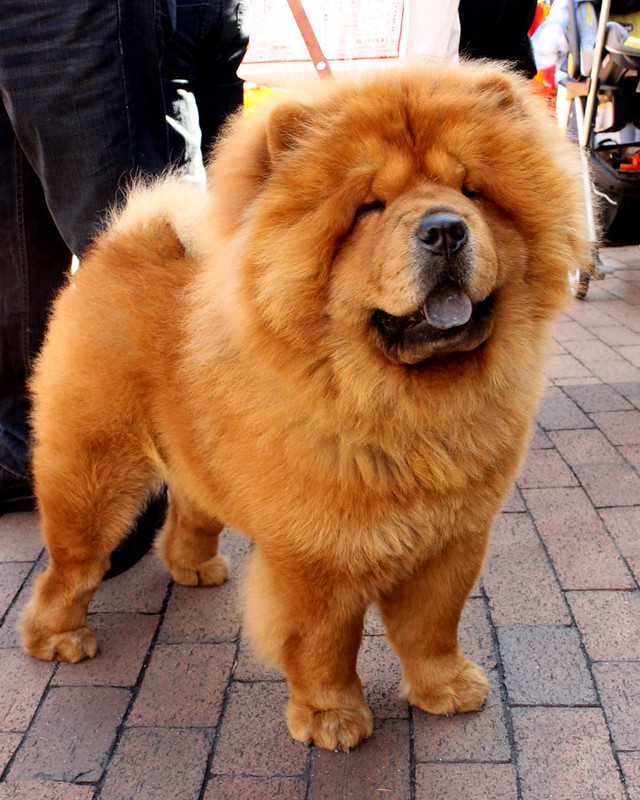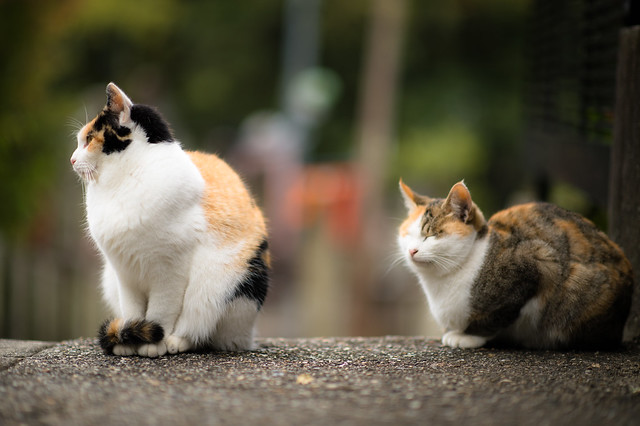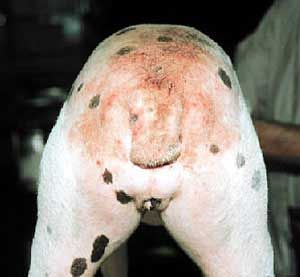 |
| Chocolate Himalayan/Colorpoint Persian (Photo credit: Wikipedia) |
Can it be possible? I, as an owner, breeding Persians and exotics, pose myself such a problem quite recently. Of, course they exist, if to see from the genetic point of view. These colors are included into standard, there is their description, but... Where are they? By all accounts from abroad, they have such animals but for some reason, they are more often met in pedigrees of British cats as experimental partners for leading new color into the breed, but not like exhibition stars. It had to spend lots of time to answer the question: "What is the real situation with Lilac and Chocolate in the Persian group?"
The paradox came to light at once: there is enough big number of Points with Chocolate and Lilac masques and practically full absence of equally colored individuals. Probably, the fashion played its role in it. After all, from the genetic point of view Lilac-Point color is more difficult in receiving than, for example, Chocolate Solid (solid-monochromatic, "firm" color). Now, thanks to fashion's jokes, selections are forced to a word for word takeout Chocolate and Lilac either from Solid-carriers CRC (carriers of Color-Point gene) or to work simpliciter with color lines, making copulations Solids (moreover it is desirable of stronger type) with Colors and further interbreeding on the Color parents. Such copulations are made for a long time, but a purposeful selection is begun recently in this direction.
Only several breeding nurseries work today in this direction:
This is JUKI in Poland. It is world-famous nursery. But again they have Chocolate and Lilac not like purpose of selection, but like a side effect of Color-Points' breeding of modern type. This is Smaragd in Estonia, which specializes in Persian and Exotic cats of Lilac color and uses in the work cats from JUKI and Finnish nurseries. Lilac cat of strong type, reached high victories by FIFE system. Pedigree program of the nursery is various and includes copulations with Chocolate sires. This is Tair Polling in Ukraine, using also bloods of JUKI, but specializing, vice versa, only in Chocolates and Tabbys. You can see first kittens from this oldest Kharkov nursery in Moscow. This is club Irbis (FIFE) in Krasnodar, working at the Colors' bloods and carriers of Chocolate. Today the nursery Rarity of one sire, cat of Lilac color. Now you can see the first Lilac prosterity of show-quality. The nursery Kelisa in Sochi is the nursery of Chocolate Persians. Prosterity of the same type, thought-out pedigree program. The nursery plans the receiving of Lilac Exots and the perfection of the type. Several animals of Chocolate color appeared in Russia and Ukraine, but you can't see the result of breeding yet. Or these cats still too young, or the pedigree program is not thought out, giving a soon result. Chocolate Exot of Kharkov bloods lives in Saint Petersburg (owner is Orlova S.), also the city on Neva can boast of Chocolate Color-Point, imported from Poland, one more Exot from Kharkov is purchased by the nursery Dimarsh (Moscow). There are animals of modern type in Perm and Voronezh, but because of their remoteness from the capital or passivity of the owners we have a few information about them. The nursery Alexander-Fred (Moscow) has three Chocolate Persian cats ( of different blood lines), one Chocolate Exot, Chocolate Cream cat, and also several cats-carriers of chocolate gene. The nursery plans the receiving of Chocolate and Lilac Bicolor cats. The nursery leads common pedigree program with Kelisa (Sochi). Several enthusiasts in Moscow started the breeding of Chocolate and Lilac Persians, but probably they either didn't have enough means to purchase interesting sires or purposefully decided to go all the way of coming-into-being of animals' type, who originally received chocolate color by the way of interbreeding.
It is necessary to understand genetic appropriateness of these colors to know the rules of breeding and receiving of Lilacs and Chocolates.
The black color of the hair equally with red is considered to be the basic color. Pigment melanin in black color - eumelanin, in red - pheomelanin. All the rest various colors (except white) are only derivatives of these two. The black
color of the hair is formed under the influence of gene B - black, which is defined as full chromogenesis. The pigment equally assigned to the axis of hair from the root till the tip. Gene B - black of black color is prepotent, and behind it, the row of recessive genes can be hidden:
color of the hair is formed under the influence of gene B - black, which is defined as full chromogenesis. The pigment equally assigned to the axis of hair from the root till the tip. Gene B - black of black color is prepotent, and behind it, the row of recessive genes can be hidden:
Gene brightener D (delutor - i.e. diluent), that gives an opportunity to receive from the given sire kittens of blue color. This gene is charged with distribution of pigments, their more thin location along the axis of hair, making the tone of the hair more light; Gene b of chocolate color ( special location of pigments along the axis of the hair) , giving an opportunity to receive from the giving animal kittens of chocolate color and, in combination with gene-brightener D, lilac color. Consideration must be given to the fact that gene b is recessive. I.e. to receive kittens of chocolate color, both of parents must be carrier of this gene, and to receive the posterity of lilac color, both of parents must have at the same time genes D and b; Gene of siamese color is interesting by opportunity to receive the posterity with siamese marks, including blue, chocolate and lilac colors (in the presence of genes of clarification and chocolate color at the same time).
Presence of given genes can define, studied the pedigree of sire or in practice, choosing partners with known genetics. But to receive the color, close to ideal, it is necessary to keep to the rule - to pair similar with similar. The main requirement for the quality of lilac and chocolate color is their tender, warm tone. These colors go well together, but as possible partners, it is allowed to choose cats of Red, Cream colors, who give their Lilac and Chocolate progeny pinkish tint of hair and bright eye color. To Lilac and Chocolate Tabbys can be recommended Golden Tabbys as possible partners or improvers of type.
A peculiarity of today's situation in Chocolate breeding of Persian is that the task to get rid of the Siamese gene became the purpose of the selections. At the first stage of the work, it comes to the leading this gene into the recessive state. In the future, numerous copulations of Chocolates and Lilacs 'inside them' will allow to clear up the color gene of the population.
It would seem that there is nothing simpler to pair Lilac-Point with Red cat, and then interbreed littermates between each other. But the question of the type stands the most sharply in Persians than in other breeds. That's why such way is inconvenient - doing the step forward, it has to do two steps back. What we have to do? Very often animals of black color, especially in extreme breeds are the carriers of the strongest, modern type, that's why they are used as improvers in the breeding of animals of different colors such as Points, Smokes, Bicolors and even Chinchillas. That's why it is appropriate to attract exactly them (or Tortoiseshell cats, received from black, high-class sires) to the chocolate program.
Extract from the standard of Persian colors WCF (edition by 1995)
PER b CHOCOLATE
Color: All colors of brown are accepted, without rust, white hairs or picture. Without grey undercoat, the color must be equal.
Lobe of the nose: Color of milky chocolate
Pads: Color of cinnamon or chocolate
Eye color: Copper or deep-orange
PER c LILAC
Color: Color of hair is pale lilac with light pink shimmer, without white hairs or picture. Without grey undercoat, the color must be equal.
Lobe of the nose: Lilac
Pads: Lilac-pink
Eye color: Copper or deep-orange
Today the interest to the rare Persian colors increases. That's why I hope that very soon we can often see the rarest and the most mysterious Chocolates and Lilacs on the shows!
|
















